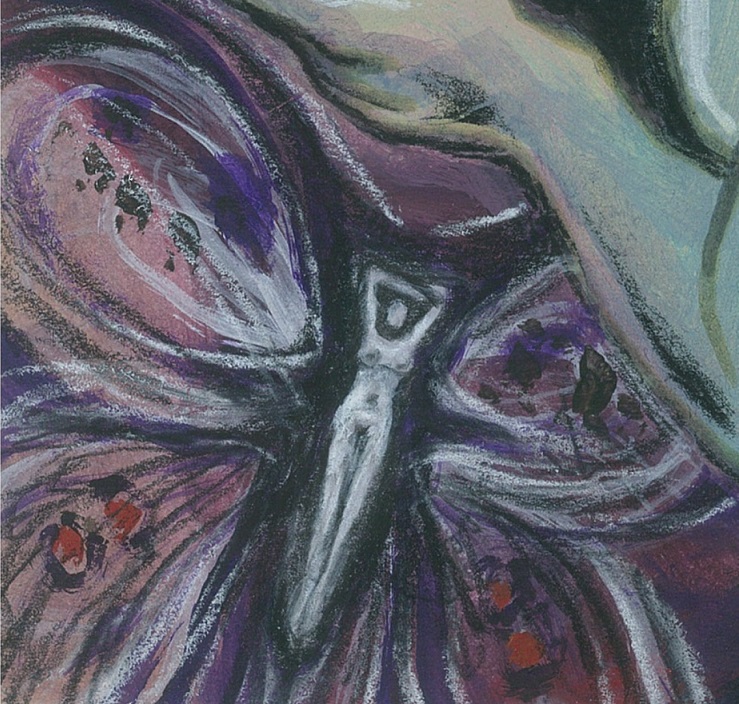
Assagioli’s psychosynthesis is dual in nature, with a personal and transpersonal component. The initial stage involves mapping out the mental contents of one’s personal unconscious in order to facilitate an authentic manifestation of I-amness. Through psychotherapeutic techniques like guided imagery, hypnosis, creative application of visualization, and active imagination, the counsellor can penetrate the overlying patina of consciousness to the host of subpersonalities beneath. By empowering these belligerent, separated aspects of oneself and bequeathing unto them the temporary gift of self-expression, the subject gains an empathetic insight into the dynamics of the human psyche that would have otherwise remained dormant. Moreover, the act of disidentifying from extreme perspectives and sublimating to an objective mount from whence the concentric configuration of the battle-weary ego becomes apparent yields a tangible resolution that can be grounded in the routines of everyday life. Suddenly, the inhibition, assimilation, and government of these subpersonalities doesn’t appear to be an insurmountable task anymore and the individual can encounter reality through the lens of a much more objective kaleidoscope. This doesn’t mean that heartfelt engagement with life is diminished, distorted, or depersonalized in any way, but rather that the fundamental infirmity and brokenness hampering each human condition can be endured and accepted as a necessary crisis for higher transformation. Assagioli insisted that the reconstitution of the psyche around a personal conscious centre functioning with this acquired acumen was an essential prerequisite to the transpersonal stage of development where the transcendent Self could project itself into consciousness and reorientate the individual toward a spiritual quest for self-actualization.
Of course, the royal road of self-actualization may never be trodden upon if the confluence of psychological debris that has gathered there from primal wounding is not cleared first. What are primal wounds, you ask? They are the psychic abrasions, grazes, and perforations inflicted upon us each time our fellow conscious projections of the universe–our immediate family members and guardians, our friends and acquaintances, our professional colleagues, and the greater communities to which we belong–participate and engage us in the ambient foreground of interactive fields without any regard whatsoever for whom we really are. Firman and Gila echo these sentiments most eloquently in relation to addiction and abuse when they say: ““In this violation, we are treated not as individual, unique human beings, but as objects; our supportive milieu–whether early caregivers, peers, institutions, or society at large–does not see us as we truly are, and instead forces us to become the objects of its own purposes.” No doubt the subtlest and deepest misunderstandings, moral transgressions, and empathic failures wrought from human relationships can be attributed to the misappropriation of human beings as dispensable objects, the idea that the numinosity within each individual can be effectively ignored, inverted, or taken advantage of for such an undignified purpose as fulfilling the carnal desire or monetary need of another (survival stage).
The full spectrum of empathic failures that leads to primal wounding is as widespread and deep as the Pacific Ocean. In its most subtle form it materializes as unresponsiveness and disregard for thoughts, behaviours, and tendencies intrinsic to an individual; in its most extreme guise it becomes molestation, harassment, and abandonment, in fact any mental or physical violation committed against another individual. A toddler whose unconcealed and overt expressions of altruistic love are not acknowledged or reciprocated in due course is as much a victim of primal wounding as the timid, sensitive child scorned and laughed at by her primary school teacher for the mispronunciation of a word or the adolescent girl whose adoptive father sexually assaults her repeatedly and then blames her physical attractiveness for it. Whilst the severity and nature of woundings differs, the feelings of worthlessness, degradation, shame, guilt, and anxiety complementing each experience is quintessentially the same. Without intending to, an individual subjected to a sequence of such woundings begins to entertain ludicrous notions of nonbeing, an acquired worthlessness quite alien and hostile to the natural human condition. In an attempt to avoid retraumatization and supplementary feelings of dissolution and dismemberment, the respective ego-conscious will jettison not only memories of the traumatic experience but also the natural proclivities and behaviours perceived to have configured the contingencies for their evolution. Authentic stigmata born from traumatization sink into the lower unconscious whilst the unobstructed exteriorizations of positive personal qualities eschewed by the negative reaction–altruistic love, creativity, humour, and faith in others–are thrust and locked into the higher unconscious. At this point it may seem as though repression has restored order, harmony, and a sense of normalcy to the personality by preventing further violations to self, however it has also limited the very fount of creative expression that characterizes authentic existence. When one splits off undesirable aspects and plunges them into unconsciousness, the trajectory of his or her consciousness effectively tapers to a truncated mode of operation supporting only those behavioural patterns accredited by the nonempathic environment. Explained slightly differently, the war-battered ego has successfully conditioned the personality so that it thinks, expresses, calculates, and acts from within the core value system of an immediate environment reluctant to accommodate the full spectrum of its being. But a lamentable loss, even one as radical and far-reaching as provisional separation from the entire gamut of sublime experiences afforded by empathic connection to the Divine, is preferable to rejection and disenfranchisement. Such is our need for acceptance and validation. So in hindsight the immediate conventions of a formative environment that have been assimilated as internalized, constricted patterns steering clear of repressed material in the personal unconscious win out in the end, or do they?
In truth, the ego-conscious does everything in its power to avoid entering into communion with environmental dynamics that run perilously close to those that facilitated the primal wounding. The latter is as much a landmark of the present as it is of the past, and so to disengage completely from the possibilities of retraumatization the ego erects walls of self-deception including illusions and phantasms about oneself, addictions, compulsions, and idiosyncrasies–in effect anything to pretend that the primal wound is not there. The psyche’s discontent at being constricted in such ways gradually surfaces, manifesting through the psychic channel as nightmares, night terrors, phobias, and depression, and through the somatic one as chronic headaches, pains, and anomalous sensations. In the worst case scenario the individual may begin to suffer preliminary symptoms indicative of mental illness. Sooner or later the mounting duress is no longer endurable or sustainable. Inaugurated by a life-shattering overhaul, perhaps the death of a loved one or a brush with death, the individual trapped in monotonous and repetitive survival patterns buckles, suffering a psychological breakdown whereby the elaborate myths, stories, or beliefs buttressing the survival personality are all called into question. It is an involuntary plunge into oblivion, nothingness; life is temporarily derailed and rendered inert.
Assagioli argued that such life transitions were nonpathological, healthy aspects of adult development and called them crises of transformation. Now, the psychic life of habitual identification that had been adhered to automatously and unconsciously is eradicated and the individual begins identifying aetiologies that might elucidate how her survival personality formed in the first place. If the seed of a more authentic life is to be sown the individual must accept and surrender to the emergent trauma, whatever its nature. Often the act of plumbing the depths and allowing these traumatic experiences into the light of consciousness is curative in itself. She must also identify with a unifying centre able to understand and contain the breakdown, such as a therapist, a self-help group, a philosophy, or a particular spiritual practice or religion (exploration stage). Once the individual is in the midst of a crisis, disidentification from repetitive life patterns that have become too limiting and empathic reconnection with more comprehensible ones is undertaken through the exploration of subpersonalities and usually culminates in the synthesis of a powerful personal centre, a ‘diamond body’ that can ground this newfound sense of meaning and expanded mode of being in ordinary life. An authentic ‘I’ emerges, a psychic entity that is safe from the spiritual winds; from the tides of pain and suffering; and from superficial, transitory states contrived by pure emotion. Another way of looking at it is that the person has developed the capacity to experience and engage actively with moods, feelings, urges–in fact any aspect of her integrated, polygonal personality–but at the same time interface with them on more objective grounds, or observe them from a third-person perspective as if the slate of mentation was not her own (emergence stage). The restructuring of the personality about this transcendence-immanence encompasses two primary purposes: to ensure that consequent primal wounding is blunted and to place the newly empowered personal centre on a yellow brick road to self-actualization, one now clear of psychological debris.
If we were to equate the emergence of ‘I’ or the personal centre with the emergence of a supernal Swallowtail butterfly from its cocoon, then contact with the transcendent Self is the butterfly in full flight. Invitations to connect with a spiritual centre and engage in an experiential relationship with meaning and purpose as defined by the authentic personality are abetted by the therapist through an assortment of powerful transpersonal techniques like meditation, dream therapy, creative visualization to musical compositions, and guided fantasy (contact stage). Nowadays controlled symbolic visualization and spontaneous symbolic visualization are both used in the promotion of psychospiritual development. The first is a systematic and coordinated method whereby pictorial parameters are raised by the psychotherapist and the subject is asked to adopt and work with them. These can be anything from a specific symbol like a mandala, a rose, a lotus, an angel, a planetary or celestial sphere, or a tower, to symbolic representations of entire scenes like the act of meandering about in a dark labyrinth or constructing a plant nursery. Standing on the opposite end of the scale is spontaneous symbolic visualization which may hint at a symbolic form or sequence but resists compartmentalizing or giving a definitive form to the image. Once the subject has assumed a relaxed posture, the psychotherapist might suggest the visualization of abstract concepts like prevailing emotional and somatic states or propose that the subject imagine a door, gate, or some other portal leading to another space or room and walk through it. With this second method the absence of any specific symbolic representation is supposed leave conscious space unformed so that any unconscious desire or feeling bubbling in the unconscious can manifest readily and liberally.
In transpersonal psychosynthesis all ideas or images evolve to encompass an altruistic or spiritual value. Some of the most popular therapeutic techniques orientated towards the exploration of personal mythology like meeting spirit guides, inner teachers, and encounters with the goddess and the divine feminine are contemporary expressions of seeking a cordial relationship with Mother Nature and humanity as a whole. When transpersonal vocations of this sort are grounded through subtle modifications in our style and choice of relationships, in the augmentation of empathic resonance and identification with our fellow brethren, in profounder honesty and authenticity, and in the discovery or rediscovery of a life path (response stage), the individual making them will more than likely experience progressive linearity towards a healthy, fruitful, and above all meaningful existence instead of one plagued by regret, dishonesty, disillusionment, and unrealized creative potentials.
Despite the fact that there is a logical progression from the survival stage of personal psychosynthesis to the response stage of transpersonal psychosynthesis, it is most important to remember that the set do not comprise an actualization hierarchy or ladder where a preceding stage might be embodied by a succeeding one. In actual fact, it is quite common for any developing ego-conscious to flit back and forth between the preliminary and subsequent stages for the entire duration of their lives.









